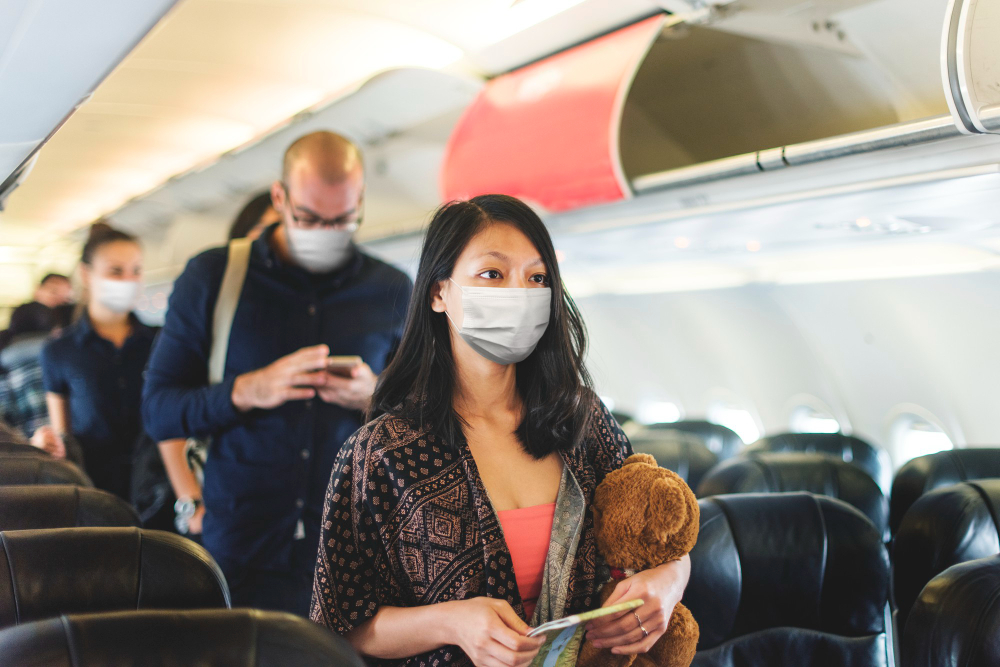If you've flown before, you've likely experienced a pre-flight safety briefing. To many travelers—especially frequent flyers—it might seem repetitive or even unnecessary. But in reality, that short, standardized presentation can be the key difference between chaos and survival in an emergency.
Though modern aviation is among the safest modes of transport, in-flight safety briefings remain a critical component of airline safety procedures. They're not just a formality—they're a carefully designed roadmap to help you respond effectively during unexpected situations. In this guide, we explain why safety briefings are crucial, what they cover, and how you, as a passenger, can play a part in ensuring a safer journey.
What Is a Pre-Flight Safety Briefing?
A safety briefing is a set of instructions provided by the cabin crew before every flight. Depending on the airline, it may be presented through a video, live demonstration, or both. Its purpose is to prepare all passengers for emergencies by explaining how to:
- A safety briefing is a set of instructions provided by the cabin crew before every flight. Depending on the airline, it may be presented through a video, live demonstration, or both. Its purpose is to prepare all passengers for emergencies by explaining how to:
- Fasten, adjust, and release seatbelts properly
- Identify and operate emergency exits
- Evacuate the aircraft quickly and safely
- Use life vests and oxygen masks in case of emergencies
- Understand the visual safety card provided in your seat pocket
- Follow electronic device policies during critical flight phases
- Adopt correct brace positions during an emergency landing
While many aspects might seem like common knowledge, safety features and exit locations vary between aircraft types. That’s why watching the briefing on every flight is essential, even if you’re a seasoned traveler.
Why In-Flight Safety Briefings Matter
1. Air Travel Is Safe, But Emergencies Still Happen
Aviation is statistically safer than most other modes of transportation, but that doesn't mean it's entirely without risk. Mechanical failures, severe weather, bird strikes, and medical emergencies can occur unexpectedly. In such cases, the first few seconds are crucial. Knowing what to do can mean the difference between safety and disaster.
For example, the recent Air India Flight 171 accident on June 12, 2025, is a stark reminder. The aircraft crashed shortly after takeoff, claiming the lives of nearly all onboard. Emergencies are rare—but they’re very real. And when they happen, passengers who understand and remember safety protocols stand a better chance of responding effectively.
2. Not All Planes Are Built the Same
Each aircraft model has a unique layout—emergency exits, seat spacing, and safety equipment locations may vary. Even frequent travelers can be caught off guard by unfamiliar aircraft. That’s why the safety briefing is not optional—it's an aircraft-specific tutorial designed to help you locate and use safety features properly.
3. Panic Can Cloud Judgment
In high-stress situations, even basic tasks can become difficult. Fear, confusion, and adrenaline affect decision-making. People may forget how to unbuckle a seatbelt, misjudge the location of an exit, or freeze entirely. By actively listening to the safety instructions, you prepare your mind to act calmly and efficiently under pressure.
4. The Smallest Details Can Be Life-Saving
Would you know how to locate your life vest in a dark or smoke-filled cabin? Could you adopt the brace position correctly under pressure? Do you know how many rows are between your seat and the nearest emergency exit?
These critical actions are covered during safety briefings. Many passengers don’t realize, for instance, that inflating your life vest inside the aircraft can hinder evacuation. These details may seem small, but they are often the key to surviving a crash or water landing.
How Passengers Can Contribute to Flight Safety
Safety in aviation isn't only the crew’s responsibility—passengers play a key role too. Here’s how you can contribute to your own safety and that of others:
Listen carefully to the entire safety briefing, even if you’ve heard it many times before.
Locate the nearest and secondary emergency exits, and count the rows from your seat.
Read the safety card—it provides visuals unique to your aircraft model.
Follow all cabin announcements, especially on long-haul or overwater flights.
Keep your seatbelt fastened at all times while seated to avoid injury from unexpected turbulence.
These simple actions not only protect you but also help cabin crew manage emergencies more effectively.
Busting Common Myths About Safety Briefings
• “I’ve flown so often—I already know everything.”
Every aircraft is different, and safety procedures can change. Familiarity breeds complacency, and that’s dangerous. Always refresh your knowledge.
• “The crew will take care of everything.”
Flight attendants are trained professionals, but in a sudden emergency, they may not reach everyone immediately. Passengers need to be ready to act independently if necessary.
• “The safety video is just for show.”
On the contrary, every detail in the video is based on aviation regulations and real-world data. These instructions are reviewed and updated regularly to reflect the latest safety practices. They’re not entertainment—they’re essential.
Final Thoughts: Why You Should Always Pay Attention to Safety Briefings
Pre-flight safety briefings are more than just airline routine—they’re one of the most important few minutes of your entire flight. They exist to prepare, not alarm. Emergencies may be rare, but being ready for them isn’t something to take lightly.
So, the next time you’re tempted to scroll through your phone or zone out during the briefing, think again. Your attention could one day save your life—or someone else’s. In aviation, awareness is safety.

